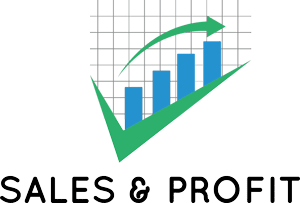Table of Contents
Sales training is a crucial investment for organizations looking to improve the performance and productivity of their sales teams.
However, the real test lies in measuring the return on investment (ROI) from these training programs.
According to Pipedrive the ROI for effective sales training can be around 353%.
Tracking the ROI is key to ensuring training objectives are met, identifying improvement areas, and making the case for further training budgets.
As a sales training company in India, we are often asked by clients about the best ways to quantify the impact of their training spend.
So in this blog, I’ll discuss the top methods sales leaders can use to measure the ROI of their sales training initiatives.
The goal is to showcase tangible returns versus just anecdotal evidence.
11 Ways to Measure ROI of Your Sales Training Program
1. Pre & Post-Training Performance Metrics
Measuring the ROI of your sales training program starts with concrete data.
One of the most effective ways to demonstrate its impact is by comparing key pre- and post-training performance metrics.
This approach helps in quantifying the direct impact of the training on sales performance.
Your choice of metrics should align with your training goals and objectives.
Here are some common and impactful KPIs to track:
- Revenue Growth
- Average Deal Size
- Sales Cycle Length
- Lead Conversion Rate
- Customer Retention Rate
- Quota Attainment
- Win Rate
- New Account Acquisition
- Upsell and Cross-Sell Rates
- Employee Satisfaction
- Sales Team Attrition Rate
- Number of Sales Calls or Visits
- Profit Margins
- Quality of Sales Pipeline
- Customer Acquisition Cost (CAC)
- Customer Lifetime Value
- Net Promoter Score (NPS)
Example
A company noticed that the average sales cycle length was 120 days before sales training.
After training reps on effective questioning techniques to uncover needs and build urgency, the sales cycle reduced to 90 days on average.
The 25% improvement can be directly attributed to the skills gained during the sales training program.
We were able to quantify the impact of training through this pre- and post-analysis of sales cycle length.
Similarly, they observed a 15% increase in deal size, 10% improvement in close rates and 12% boost in revenue per rep after the training compared to earlier performance.
The before and after analysis of KPIs clearly demonstrated that the sales training program had a definitive positive impact on sales productivity.
We could numerically establish the value derived from the training investment in terms of performance improvement.
2. Sales Target Achievement
The ultimate test of any sales training program is whether it translates into increased revenue and sales success.
An increase in target achievement rates can be a strong indicator of successful training.
Example
Prior to putting sales reps through social selling training, only 55% of reps met their quarterly sales targets.
After they were trained on leveraging social media to generate leads and build relationships, we saw the percentage jump to 78% in the next quarter.
This data clearly shows that equipping the team with social selling skills contributed directly to more reps achieving their targets.
3. Adoption and Utilization Rates
Adoption and utilization rates delves deeper into how actively your sales team is applying the acquired skills and tools from the training program in their daily work.
According to a survey, around 84% of sales training is lost or forgotten within 90 days.
So its important to know if the learnings are retained by sales reps
This provides insights into training effectiveness.
Here are some ways to increase the Adoption and Utilization:
- Interactive Training Methods: Employ blended learning approaches with hands-on activities, simulations, and role-playing to encourage active participation and application of skills.
- Ongoing Support and Reinforcement: Provide readily accessible resources, coaching opportunities, and peer-to-peer mentorship to bridge any gaps between learning and practical implementation.
- Incentivize Utilization: Consider implementing recognition programs or performance rewards tied to the adoption and successful application of new skills and tools.
Based on my experience in conducting various training programs, I have noticed that immediately after training sessions the adoption rate is high.
However, after 7 days post-training, many of these KPIs start declining as the initial excitement wears off and sellers lapse back into old habits.
So, I recommend tracking metrics at least 2-3 times over a period of 6-9 months post-training to assess whether the learning is sticking.
4. Retention and Turnover Rates
While sales performance metrics are crucial, your sales training program’s impact extends beyond the immediate numbers.
One often overlooked measure of its effectiveness lies in its influence on employee retention and reduce in turnover rates.
Effective sales training can positively impact retention in several ways:
- Increased Job Satisfaction: Training that equips reps with new skills, knowledge, and confidence can lead to greater job satisfaction, fostering a sense of accomplishment and value within the organization.
- Improved Morale and Engagement: Training that promotes collaboration and peer-to-peer learning can build camaraderie and a stronger sense of belonging, further increasing engagement and reducing the temptation to seek opportunities elsewhere.
- Enhanced Career Development: When training demonstrates the company’s commitment to investing in its employees’ professional growth, it can boost morale and loyalty, as individuals feel valued and see a long-term future within the organization.
Example
Prior to a management skills training for frontline sales managers, the annual sales manager turnover rate was 32%.
In the 9 months after the training, the turnover rate has reduced to 22%.
Equipping the managers with leadership and coaching skills has made them more confident and satisfied in their roles.
This has directly contributed to higher retention within the sales management team.
Additionally, the overall sales staff turnover rate has dropped from 27% to 19% in the 6 months following sales coaching training for managers.
The decline in turnover rates across management and individual contributor levels shows the positive impact training has had on engagement, satisfaction and retention.
The numbers clearly prove that investing in developing sales teams ultimately reduces attrition rates, creating a more stable and motivated sales organization.
By measuring and analyzing these metrics, you can demonstrate the impact of your training program on employee satisfaction and loyalty, not just sales performance.
This broader perspective strengthens your case for ongoing investment in training and development, ultimately contributing to a more robust and successful sales organization.
5. Lead Conversion Rates
We can track how efficiently sales reps are converting leads into customers post-training.
An increase in conversion rates can signal improved sales skills.
Example
For instance, prior to objection handling training, sales reps were converting 18% of marketing qualified leads on average.
After they were trained on techniques to effectively tackle different objections, the lead conversion rate improved to 21% over the next quarter.
This uplift of 3 percentage points directly resulted from equipping the team to confidently handle objections during the sales process.
By measuring and analyzing lead conversion rates, you gain valuable insights into the effectiveness of your sales training program in optimizing the sales funnel.
6. Upselling and Cross-Selling Success
We evaluate the success rates in upselling and cross-selling before and after sales training programs.
Improvements in these areas can directly contribute to increased revenue.
Example
For instance, prior to objection handling training, sales reps were converting 18% of marketing qualified leads on average.
After they were trained on techniques to effectively tackle different objections, the lead conversion rate improved to 21% over the next quarter.
This uplift of 3 percentage points directly resulted from equipping the team to confidently handle objections during the sales process.
The growth in upsell and cross-sell conversion metrics helps in understanding how much the sales training contributed to tangible improvements in selling skills leading to more revenue from existing accounts.
7. Cost-Benefit Analysis
We can compare the cost of conducting sales training to the tangible benefits gained like increased revenue, improved productivity etc.
It helps you evaluate the financial viability of your sales training program by comparing the costs incurred with the tangible benefits achieved.
Breaking Down the Costs:
1. Direct Cost
- Trainer or Facilitator Fees
- Training Material Costs (manuals, handouts, software)
- Venue Rental (if off-site)
- Equipment Rental (projectors, screens, sound systems)
- Travel and Accommodation (for trainers and/or attendees)
- Catering Services
- Printing and Stationery
- External Consultant Fees (if applicable)
2. Indirect Cost
- Time Cost for Participants (hours spent in training instead of selling)
- Opportunity Cost (delay in sales activities)
- Follow-up Training or Reinforcement Sessions
- Evaluation and Feedback Processes
- Short-term decrease in sales due to the learning curve
Identifying the Benefits:
1. Direct Benefits
- Increased Sales Revenue
- Improved Sales Efficiency and Productivity
- Higher Conversion Rates
- Shorter Sales Cycles
- Enhanced Customer Retention Rates
- Better Understanding of Sales Tools and Technologies
- Increased Average Deal Size
- Improved Win Rates
- Improved Upselling and cross-selling
- Stronger Alignment with Marketing and Other Departments
- Better Adherence to Sales Processes and Strategies
2. Indirect Benefits
- Enhanced Employee Morale and Job Satisfaction
- Improved Team Collaboration and Communication
- Increased Employee Retention Rates
- Development of a Strong Sales Culture
- Enhanced Brand Reputation through Improved Customer Interactions
- Creation of a Continuous Learning Environment
- Improved Leadership and Management Skills among Sales Leaders
- Greater Adaptability to Market Changes and Challenges
- Long-Term Customer Relationships and Loyalty
Example
A company spent $100,000 on a recent sales methodology training program. In the 9 months post training, they saw a 15% boost in average deal sizes leading to $200,000 incremental revenue.
The 2:1 return on the training investment clearly exhibits the monetary value derived from building selling skills.
The cost-benefit analysis provides a quantitative approach to demonstrate the tangible value of training.
It also helps justify additional investments in training programs.
8. Behavioral Changes
We can gather qualitative feedback from sales managers on behavioral changes noticed in reps after training programs.
The following behavioral changes can be tracked
- Increased Confidence – Look for signs of higher confidence in sales reps, such as more assertive communication, willingness to take on challenging clients, or proactively seeking out new sales opportunities.
- Enhanced Strategic Thinking – Monitor for a more strategic approach in sales processes. Reps should demonstrate a better understanding of the sales pipeline, show skills in identifying key decision-makers, and develop tailored strategies for different accounts.
- Increased Resilience and Positivity – Look for signs of greater resilience, such as maintaining a positive attitude after rejections or setbacks, and an overall persistent approach in pursuing sales goals.
- Better Time Management – Observe if sales reps are utilizing their time more efficiently, focusing more on high-value activities, and reducing time spent on non-sales tasks.
- Proactive Customer Engagement – Notice if sales reps are more proactive in engaging with customers, following up diligently, and keeping the customer informed throughout the sales process.
- Quality of Customer Interactions – Evaluate the quality of interactions sales reps have with customers. This can be measured through customer feedback, the depth of customer relationships, and the ability to build trust
9. Long-term Performance Trends
Tracking long-term performance trends over 12-18 months provides a clearer picture of the program’s lasting impact on individual reps, the sales team as a whole, and your overall business success.
Example
In the 15 months since the strategic account management training was conducted, a large deal conversion rates have steadily improved from 32% to 47%.
This continued uplift proves that skills gained during training have resulted in enduring performance enhancement.
The positive long-term trends demonstrate that regular training translates to lasting sales performance improvement, and not just a short-term spike.
10. Quality of Sales Pipeline
Evaluate the quality and potential value of the sales pipeline after training programs to determine impact.
An increase in high-value leads and a more robust pipeline can be a direct result of enhanced selling skills.
Here are some key indicators of a robust pipeline:
- Higher Lead-to-Opportunity Conversion Rate – Track the percentage of leads that progress to the “opportunity” stage after the training. An increase suggests improved lead qualification skills and better targeting of potential customers.
- Increased Average Deal Size – Analyze the average value of deals in the pipeline after the training. An upward trend points to the sales team identifying and pursuing higher-value opportunities, indicating improved prospecting skills.
- Stronger Lead Qualification Criteria – Review your lead qualification criteria post-training. Have they become more stringent, focusing on factors like budget, authority, and decision-making power? This signifies a shift towards qualified leads with higher conversion potential.
- Shorter Sales Cycle Length – Monitor the average time it takes to close deals post-training. A decrease in the sales cycle can indicate improved communication, negotiation skills, and deal closure techniques learned through training.
Example
For instance, prior to opportunity qualification training, only 52% of pipeline deals had over 50% estimated probability of closing.
After training reps on identifying and progressing high potential opportunities, 64% of pipeline deals now have a probability of close above 50%.
Also the average deal size in the pipeline went up by 12% and the overall pipeline value increased.
The jump in pipeline quality and value metrics proves that equipping the sales team with critical selling competencies has a tangible impact on the sales funnel.
Improved prospecting, qualification, negotiation and closing skills translate to a healthier pipeline comprising more high-value deals.
And this ultimately flows down to the bottom-line.
11. Post Training Survey
We can collect feedback from the trained employees through surveys to evaluate various aspects of the program.
Post-training surveys can gather the sales team’s perspectives on content relevance, program delivery, instructor quality, practical application etc.
The post-training surveys also provides a qualitative insights into how the program is received by the trainees.
It helps assess whether the training is hitting the mark on intended outcomes.
Wrapping Up
We can collect feedback from the trained employees through surveys to evaluate various aspects of the program.
Post-training surveys can gather the sales team’s perspectives on content relevance, program delivery, instructor quality, practical application etc.
The post-training surveys also provides a qualitative insights into how the program is received by the trainees.
It helps assess whether the training is hitting the mark on intended outcomes.






